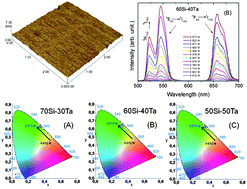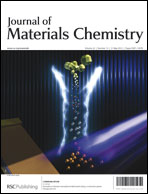Color tunability of intense upconversion emission from Er3+–Yb3+ co-doped SiO2–Ta2O5 glass ceramic planar waveguides
Abstract
This work reports on the infrared-to-visible CW frequency upconversion from planar waveguides based on Er3+–Yb3+-doped 100–xSiO2–xTa2O5 obtained by a sol–gel process and deposited onto a SiO2–Si substrate by


 Please wait while we load your content...
Please wait while we load your content...